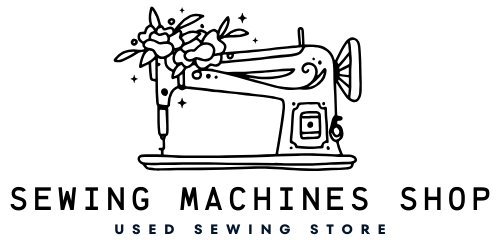
Are Hand Sewing Machines Worth It
Handheld sewing machines have become an attractive option for many who want a portable, affordable solution to quick sewing repairs. But are they really worth the investment? Whether you’re a seasoned sewist or just getting started, this article will dive deep into the pros and cons of handheld sewing machines and help you decide if they’re right for you. With their compact design and low cost, they may seem like a no-brainer, but there are a few things to consider before making your purchase.
What Is a Handheld Sewing Machine?
How It Differs from Traditional Sewing Machines
A handheld sewing machine is a small, portable device designed for quick and easy sewing tasks. Unlike traditional sewing machines, which are large and often heavy, handheld models are lightweight and battery-operated. This makes them convenient for on-the-go repairs, but it also means they lack the power and versatility of their full-sized counterparts.
Common Features of Handheld Models
Most handheld sewing machines offer basic stitch functions, usually a straight stitch, and are designed for light fabrics. They often come with a built-in thread cutter, tension control, and a simple threading mechanism. While they can be handy for small tasks, they typically don’t offer the wide range of stitch options or the speed of a standard sewing machine.
The Pros of Using a Handheld Sewing Machine
Portability and Convenience
One of the biggest advantages of a handheld sewing machine is its portability. You can easily carry it in your bag, making it ideal for quick repairs on the go. Whether you’re traveling or just need to fix a loose hem at home, a handheld machine can save you the hassle of pulling out a larger machine or going to a tailor.
Ideal for Quick Repairs and Alterations
Handheld sewing machines are perfect for small tasks like mending a tear, sewing a loose button, or fixing a hem. They allow you to make these quick fixes without the need to set up a full-sized sewing machine, which can be time-consuming for such minor tasks.
Budget-Friendly Option for Casual Sewists
If you’re not planning to take on big sewing projects, a handheld sewing machine can be a cost-effective solution. They’re generally much cheaper than traditional sewing machines, making them an appealing option for those who only sew occasionally or for those who want a secondary machine for emergencies.
The Cons of Using a Handheld Sewing Machine

Limited Sewing Capabilities
While handheld sewing machines are great for quick fixes, they are not designed for more complex projects. They typically offer only one or two stitch options and are best suited for simple, straight-line sewing. If you’re looking to work on more intricate designs or need a variety of stitches, a handheld model may not meet your needs.
Durability and Build Quality Concerns
Many handheld sewing machines are made with plastic components, which can affect their durability. They are often less sturdy than full-sized machines, and with frequent use, they may wear out more quickly. If you need a machine that can withstand regular use, you might want to consider investing in a more durable, full-sized model.
Struggles with Heavy Fabrics
Handheld sewing machines are generally not powerful enough to handle heavy fabrics like denim, canvas, or multiple layers of material. They may struggle to produce even stitches on thicker fabrics, leading to frustration and potentially damaging the fabric. For heavier sewing tasks, a full-sized machine is usually a better option.
Comparing Handheld Sewing Machines with Full-Sized Models
Feature Comparison
When comparing handheld sewing machines to full-sized models, the differences in features are significant. Full-sized machines often come with a wide range of stitch options, automatic tension control, and more powerful motors. In contrast, handheld models focus on simplicity and portability, which limits their functionality.
Performance in Various Sewing Tasks
Full-sized machines are built for versatility and can handle a wide range of sewing tasks, from light repairs to complex projects like quilting or garment construction. Handheld machines, on the other hand, are limited to smaller, more straightforward tasks. They perform well for quick repairs but fall short when it comes to more demanding sewing jobs.
When a Handheld Sewing Machine Might Be the Right Choice

For Small, On-the-Go Repairs
If you frequently find yourself needing to make small repairs while away from home, a handheld sewing machine can be a lifesaver. It’s compact enough to carry with you and can quickly fix minor issues like a loose button or a small tear in your clothing.
For Beginners Testing the Waters
If you’re new to sewing and not yet ready to invest in a full-sized machine, a handheld model can be an inexpensive way to test the waters. It allows you to get a feel for sewing without the larger financial commitment of a traditional machine.
For Lightweight Fabrics Only
Handheld sewing machines work best with lightweight fabrics such as cotton or polyester. If your projects involve these types of materials, a handheld machine might be sufficient for your needs.
When to Avoid Using a Handheld Sewing Machine
For Large or Complex Projects
If you plan to work on larger projects, such as sewing garments, quilting, or creating home décor items, a handheld sewing machine is not the best choice. These machines are not designed for long-term use or intricate work, so they may not provide the precision or durability needed for more complex projects.
For Sewing Heavy Materials
As mentioned earlier, handheld sewing machines struggle with thick fabrics. If your projects involve heavy materials, such as denim, upholstery fabric, or leather, a handheld machine is likely to disappoint. A more robust, full-sized machine is better equipped to handle these tougher materials.
For Professional Use
For professional sewists who need reliable performance and a wide range of features, a handheld sewing machine is unlikely to meet expectations. These machines are designed for convenience and quick fixes, not for heavy-duty or professional-level sewing.
Key Factors to Consider Before Buying a Handheld Sewing Machine

Assessing Your Sewing Needs
Before purchasing a handheld sewing machine, it’s essential to assess your sewing needs. Consider the types of projects you plan to work on, how often you’ll use the machine, and whether you’ll need any specific features. This will help you determine if a handheld model is the right choice for you or if a traditional machine would be a better investment.
Researching Brands and Models
Not all handheld sewing machines are created equal. Some brands have a better reputation for quality and reliability, even in their lower-priced models. Take the time to research different brands and read reviews from other users. This can help you find a handheld sewing machine that offers the best value for your money.
Reading Reviews and Testimonials
Before making a purchase, it’s always a good idea to read reviews and testimonials from other customers. This can give you insights into the machine’s performance, durability, and ease of use. Look for patterns in the reviews—if multiple users mention the same issues, it could be a red flag.
Tips for Getting the Most Out of Your Handheld Sewing Machine
Maintenance Tips for Longevity
To get the most out of your handheld sewing machine, regular maintenance is key. Keep the machine clean, replace the batteries when needed, and store it in a safe place when not in use. Following these basic maintenance steps can help extend the life of your machine and ensure it continues to perform well.
Maximizing Its Efficiency with Simple Projects
While handheld sewing machines are limited in their capabilities, you can still maximize their efficiency by sticking to simple projects. Use them for quick fixes, small alterations, and other light tasks that don’t require the power of a full-sized
machine. This will help you get the most out of your investment without overloading the machine.
Conclusion
When it comes to determining whether a handheld sewing machine is worth it, the answer depends on your specific needs and expectations. If you’re looking for a portable, budget-friendly solution for quick repairs, a handheld machine can be a great option. However, if you need a machine for larger or more complex projects, a full-sized model will likely serve you better. Weigh the pros and cons carefully, do your research, and make an informed decision that suits your sewing goals.
FAQs
1. Can I use a handheld sewing machine to sew heavy fabrics?
Handheld sewing machines are not designed for heavy fabrics like denim or leather. They work best with lightweight materials such as cotton or polyester.
2. How long does a handheld sewing machine last?
The lifespan of a handheld sewing machine depends on the brand and how frequently it’s used. With proper care, it can last several years, but it’s important to recognize that these machines are not built for heavy use.
3. Are handheld sewing machines good for beginners?
Yes, handheld sewing machines can be a good starting point for beginners who want to learn the basics of sewing without investing in a full-sized machine. They are simple to use and great for small projects.
4. Do handheld sewing machines require any special maintenance?
Handheld sewing machines require basic maintenance like regular cleaning and battery replacement. Make sure to follow the manufacturer’s instructions for proper care.
5. Where can I buy a handheld sewing machine?
You can purchase handheld sewing machines from various retailers, including online shops like the Sewing Machine Shop.
Visit our Sewing Machine Shop for the best sewing machine deals.
For more insightful articles, visit our Medium page !

